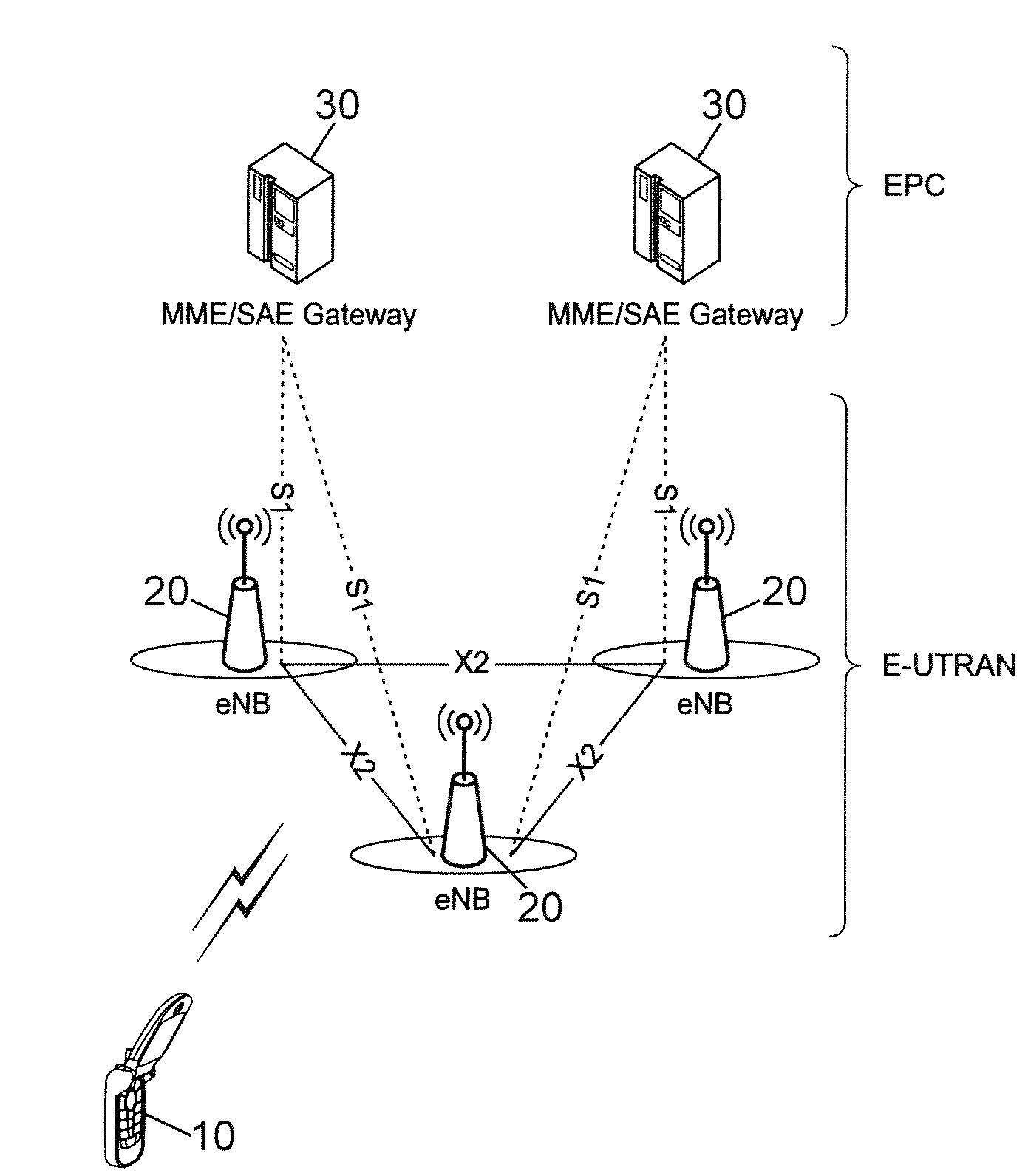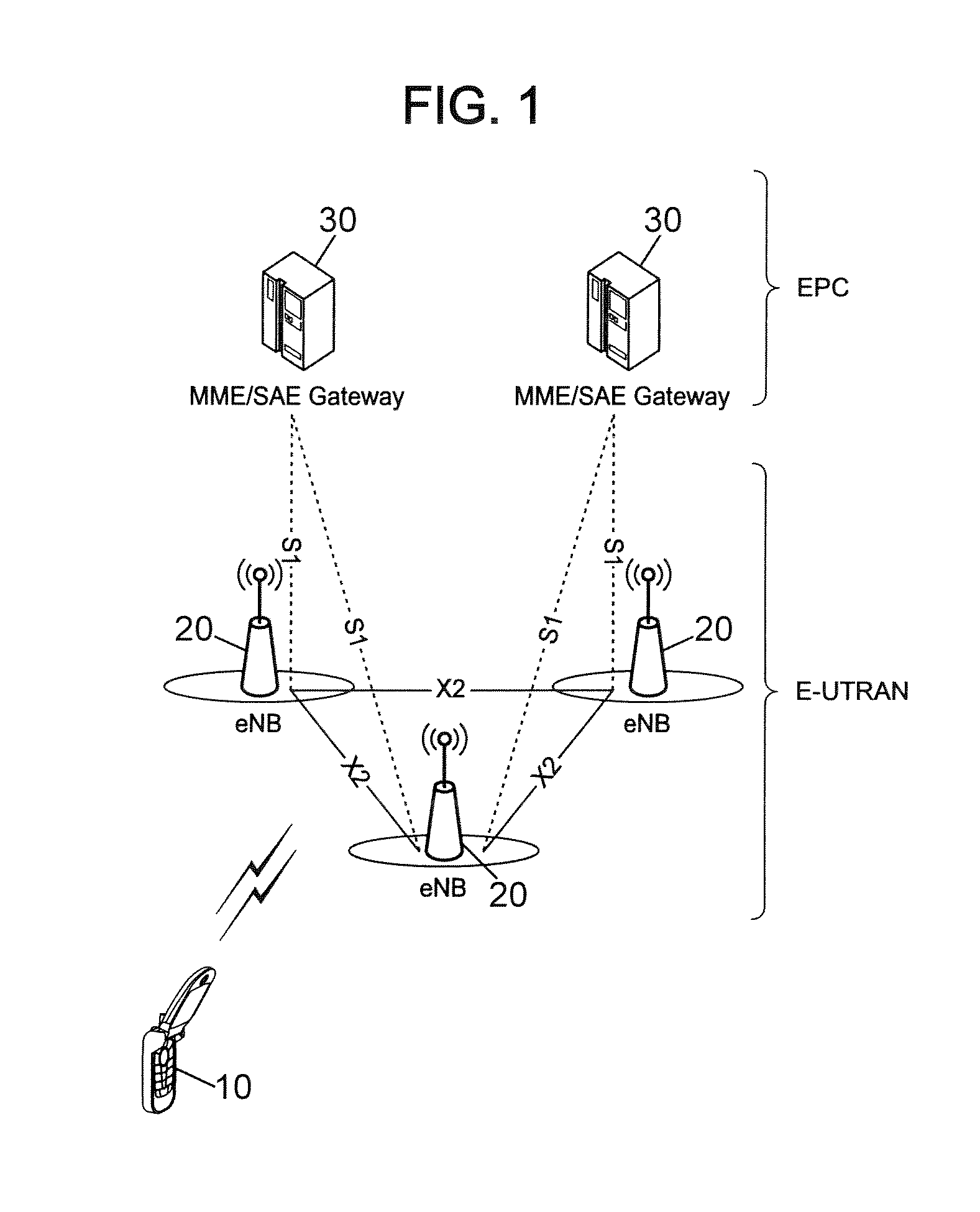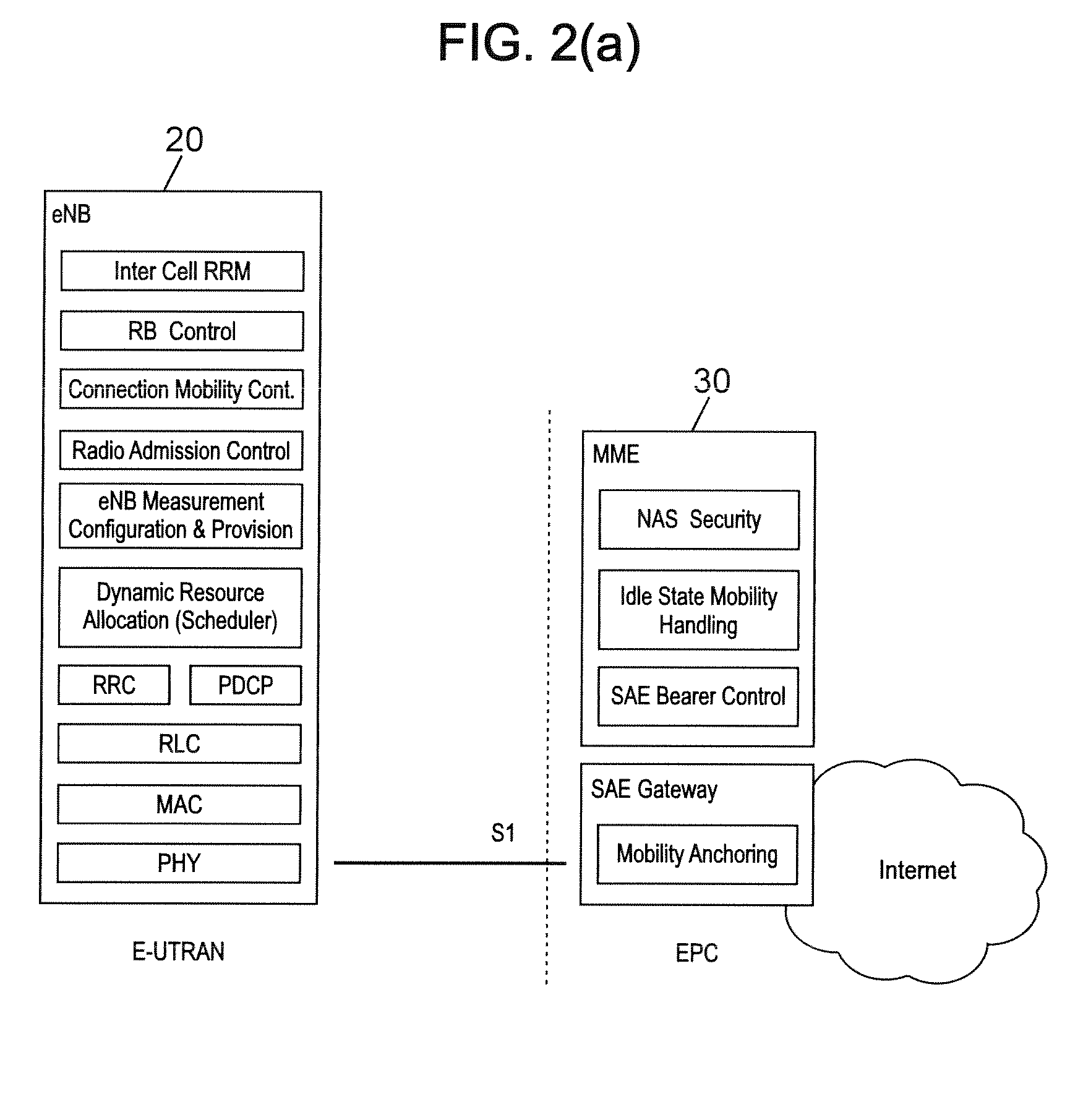Handover method with link failure recovery, wireless device and base station for implementing such method
a technology of link failure recovery and handover method, applied in the direction of network traffic/resource management, transmission system, instruments, etc., can solve the problems of security breach, reduce the probability of wireless device switching to idle, etc., to reduce the probability, reduce security risk, and diversify the effect of authentication data
- Summary
- Abstract
- Description
- Claims
- Application Information
AI Technical Summary
Benefits of technology
Problems solved by technology
Method used
Image
Examples
Embodiment Construction
[0062]A handover process in case of radio link failure is depicted in FIG. 4 in the particular, non-limiting context of an LTE system.
[0063]The beginning of the procedure up to step S6 is quite similar to that of the procedure discussed above with reference to FIG. 3 and will not be described again here. However, step S4 in which the HANDOVER REQUEST message is transmitted from the source eNodeB 20S to a target eNodeB 20T is modified (step S4′) to include in the HANDOVER REQUEST message (or in a separate message sent along with the HANDOVER REQUEST message), in addition to the identifier of the UE 10 for which the handover procedure is initiated, information making it possible to obtain authentication data in the form of an authentication vector. The HANDOVER REQUEST message is received by each target eNodeB 20T by means of its network X2 interface.
[0064]It is important to note that the HANDOVER REQUEST message can be sent to several target eNodeBs selected in step S3, in order to c...
PUM
 Login to View More
Login to View More Abstract
Description
Claims
Application Information
 Login to View More
Login to View More - R&D
- Intellectual Property
- Life Sciences
- Materials
- Tech Scout
- Unparalleled Data Quality
- Higher Quality Content
- 60% Fewer Hallucinations
Browse by: Latest US Patents, China's latest patents, Technical Efficacy Thesaurus, Application Domain, Technology Topic, Popular Technical Reports.
© 2025 PatSnap. All rights reserved.Legal|Privacy policy|Modern Slavery Act Transparency Statement|Sitemap|About US| Contact US: help@patsnap.com



